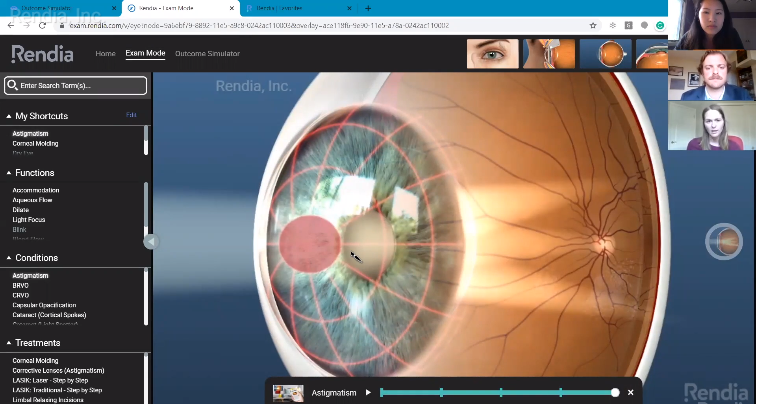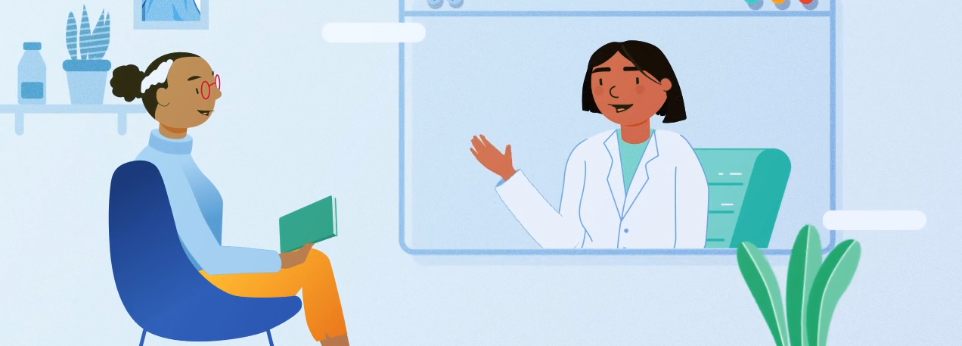Telehealth is here to stay, but it doesn’t have to be all or nothing
COVID-19 may have permanently changed the way we practice health care. A new study shows telehealth visits in the U.S. increased 4,347 percent in March 2020 compared to the same month last year, per private insurance claims. And according to Medical Economics, “Though it may be tempting to brush off telemedicine as a stopgap measure during this unprecedented health care emergency, new research shows that virtual care will outlast the pandemic itself.”
Patients have grown increasingly comfortable with using technology in their daily lives, including for health care. Online reviews are now the most popular way to find a new doctor, online appointment scheduling has surpassed phone calls, and many practices now send patients follow-up messages and reminders via text and email.
During COVID-19, many doctors and patients have found that virtual visits save them time, reduce unnecessary risk, and in some cases can even improve patient comprehension and experience. Of course, not all aspects of medical care can be conducted virtually. Many practices are finding success with a combination of digital tools and in-person care.
More emphasis on what happens before the visit
In our current climate, it’s critical that providers offering both telehealth services and in-person visits “take the time to think through the patient journey, placing a bigger-than-normal emphasis on what happens before and after the appointment,” stated MedCityNews.
A common approach practices are taking now is moving everything possible online in order to minimize exposure and risk for doctors and patients and maximize in-person interactions.
Online intake forms, pre-appointment Zoom calls, and sending out patient education videos can help patients prepare for their visits, whether virtual or in-person.
Before the appointment, that may look like sending patients online forms so they can fill out their medical history at home and send it in ahead of time. Then, you might want to follow up with a Zoom or Facetime call prior to the visit to go over patients’ history with them and have a conversation without masks on. That’s what Robert Davis, O.D., a practice owner in Florida, said he plans to do to overcome communication barriers due to mask-wearing. Older patients and those with hearing loss may have trouble understanding you through a mask. Also, “you lose that special communication with patients” when they can’t see your smile, noted Dr. Davis on The Power Hour optometry radio show.
Educating patients and preparing them for their appointments is not the same now, either, with fewer in-person visits and less time spent in the waiting room. Sending patients educational videos prior to their visit is an easy way to help them prepare.
Setting expectations for virtual visits
Most practices understand the importance of setting patient expectations for in-person visits during this time. You know you need to communicate what you’re doing to keep patients safe, any changes to your visitor policies or waiting room, and whether you are providing PPE or patients need to bring their own.
Because many doctors are new to telemedicine, they may not take the same time to set expectations for virtual visits, but it’s necessary—particularly because many patients are also new to virtual visits. How long will the appointment take? Is it covered by their insurance? Do they need a computer, or will a smartphone suffice? How do they log on? Consider showing patients Rendia’s new video, What Is Telehealth?
As we mentioned in our last post, patients’ feedback and online reviews are more important than ever. According to a Doctor.com survey of more than 1,800 patients, 83 percent expect to use telemedicine after the pandemic resolves, so it’s crucial that you provide a good patient experience. An effective setup with a strong internet connection and good lighting is a must. For more tips you can share with patients, see our post Succeeding with Telemedicine in Our ‘New Normal’.
Digital tools like Rendia’s Exam Mode and Outcome Simulator can be used in person or remotely, increase comprehension, and help patients feel a tangible benefit from the visit.
Another way to enhance both virtual and in-person visits is with digital tools. Rendia customers already have access to mobile health technology that you can continue to use to connect with patients and educate them remotely. During a telehealth consultation, share your screen and use Exam Mode to show patients anatomical details, disease progression, and treatment options. As you know, visuals will help patients better understand and recall the information you are giving them. You end up spending less time answering basic questions and instead have a more meaningful discussion that helps the patient feel a tangible benefit from the visit.

For elective procedures, Outcome Simulator is a great tool that works the same way for a virtual visit as it does in person. You or your surgical counselors can show your refractive surgery patients what they can expect. When you visually articulate the benefits and potential side effects, patients can better envision what their experience will be—reducing their uncertainty and enabling them to make an informed decision. Another perk is that you can share Outcome Simulator virtually with family members or caregivers who may not be able to accompany patients to appointments due to COVID-19 restrictions.
How virtual visits or hybrid visits benefit practices
Patient visits that are all or partially virtual have additional benefits you may not have considered. For one, you may be able to reach previously untapped patient populations, such as younger patients who highly value convenience and time savings. Telemedicine saves patients over 100 minutes of their time compared to an in-person visit, according to Medical Economics.
A hybrid appointment, which combines telehealth with in-person exams, saves patients time, accommodates erratic work schedules, and helps reduce costly no-shows.
Since many people are working from home now and may have erratic work schedules, some practices are using telemedicine to better accommodate patients. For an example of how the hybrid appointment model can work, consider what Denise Visco, M.D., an ocular surgeon in York, Pa., does with her laser vision correction patients. First, they come in for a slit lamp exam with an optometrist. The exam is recorded and shared with the surgeon, who reviews it and has a telehealth visit with the patient to discuss their options, perhaps in the evening after work, she explained in a roundtable discussion for The Ophthalmologist. This helps secure the future appointment, and allows staff to see patients when it’s convenient for both parties—especially helpful for those who may have childcare challenges right now.
Telemedicine can also reduce costly no-shows. Not only do virtual visits save patients the time of having to drive to your practice and sit in the waiting room, they also help avoid circumstances that lead to no-shows, like traffic or a sick child.
As practices resume business and look toward the future, integrating technology wherever it makes sense can be the key to helping them continue to deliver quality patient care while minimizing risk for everyone.
Watch our telehealth tutorial video for an example of how screen sharing during a virtual LASIK consultation can help patients understand the benefits of the procedure.

